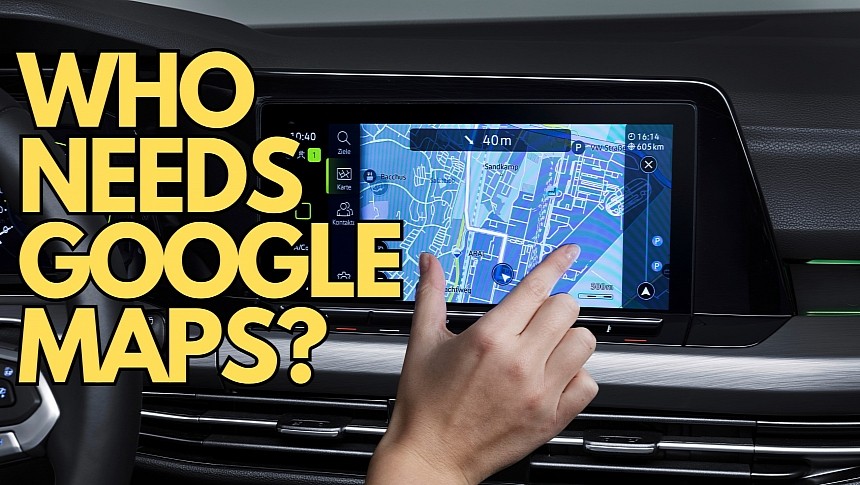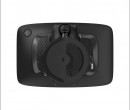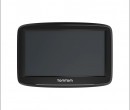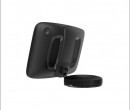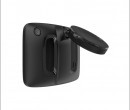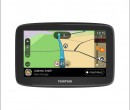You'd think that more drivers rely on Google Maps and Waze than on the built-in navigation software available in their cars, but navigation specialist TomTom expects otherwise.
The company has recently revealed its third-quarter sales, revealing a growth of 10 percent to 119.2 million euros (approximately $126 million). The growth is good news for the navigation expert, but the revenue target was missed, with analysts expecting the sale to reach 122 million euros.
But while TomTom's revenue did not meet analysts' expectations, the company believes the built-in navigation industry is poised to continue growing in the coming years.
Taco Tutaler, Chief Financial Officer at TomTom, explained that four in ten cars ship with built-in navigation today, but the company expects the number to double by the end of the decade. Approximately 80 percent of the new cars should come with built-in navigation, as carmakers want to offer more integrated capabilities that don't require additional installs on the user's side, such as downloading and installing a mobile navigation solution.
Android Auto and CarPlay have made using navigation a straightforward experience behind the wheel, as launching Google Maps and Waze is a matter of time on either platform. Android Auto and CarPlay come pre-loaded with the operating system, and drivers can launch them by connecting the smartphone to a compatible head unit in the vehicle.
Apple says nearly 80 percent of the new-car buyers in the United States see CarPlay as a mandatory system. Otherwise, they are ready to give up on buying a specific model, Apple says, emphasizing that CarPlay is here to stay, regardless of the push for integrated solutions.
TomTom believes the built-in navigation is getting smarter with artificial intelligence and new-generation features, so drivers would no longer need to install other software.
The adoption of Android Auto and CarPlay skyrocketed primarily due to the horrible software implementation of sat-nav solutions and other software applications in the infotainment systems. GPS software rarely received updates, leaving drivers forced to rely on old maps that did not reflect what happens on the road.
Many users abandoned the built-in navigation and switched to mobile devices, where Google Maps, Apple Maps, and Waze dominate the market. These applications offer up-to-date maps thanks to a permanent Internet connection, as the parent companies collect data from their devices to update traffic conditions. Waze pushes the concept further with a crowdsourcing engine that allows users to send traffic reports, alerting others of incidents they encounter on the road.
TomTom is also betting big on artificial intelligence and ChatGPT-based technology, and the company hopes that these new systems will keep it at the forefront of the industry by the end of the decade, especially as products from rivals like HERE and Google expand in the same directions too.
But while TomTom's revenue did not meet analysts' expectations, the company believes the built-in navigation industry is poised to continue growing in the coming years.
Taco Tutaler, Chief Financial Officer at TomTom, explained that four in ten cars ship with built-in navigation today, but the company expects the number to double by the end of the decade. Approximately 80 percent of the new cars should come with built-in navigation, as carmakers want to offer more integrated capabilities that don't require additional installs on the user's side, such as downloading and installing a mobile navigation solution.
Android Auto and CarPlay have made using navigation a straightforward experience behind the wheel, as launching Google Maps and Waze is a matter of time on either platform. Android Auto and CarPlay come pre-loaded with the operating system, and drivers can launch them by connecting the smartphone to a compatible head unit in the vehicle.
Apple says nearly 80 percent of the new-car buyers in the United States see CarPlay as a mandatory system. Otherwise, they are ready to give up on buying a specific model, Apple says, emphasizing that CarPlay is here to stay, regardless of the push for integrated solutions.
TomTom believes the built-in navigation is getting smarter with artificial intelligence and new-generation features, so drivers would no longer need to install other software.
The adoption of Android Auto and CarPlay skyrocketed primarily due to the horrible software implementation of sat-nav solutions and other software applications in the infotainment systems. GPS software rarely received updates, leaving drivers forced to rely on old maps that did not reflect what happens on the road.
Many users abandoned the built-in navigation and switched to mobile devices, where Google Maps, Apple Maps, and Waze dominate the market. These applications offer up-to-date maps thanks to a permanent Internet connection, as the parent companies collect data from their devices to update traffic conditions. Waze pushes the concept further with a crowdsourcing engine that allows users to send traffic reports, alerting others of incidents they encounter on the road.
TomTom is also betting big on artificial intelligence and ChatGPT-based technology, and the company hopes that these new systems will keep it at the forefront of the industry by the end of the decade, especially as products from rivals like HERE and Google expand in the same directions too.
